“The place she had danced freely when she was young was the very same place she was married off like a piece of property.”
How do you feel about beauty pageants?
In her book Feminisms: A Global History, Professor Lucy de Lappe writes that in the Philippines, which by the way, was colonized by Spain between 1521 and 1898. And then by America from 1898 to 1946, Filipino women found that they could gain power in the public sphere by means of beauty and fashion, and specifically through beauty contests. Many women’s suffragists and journalists in the Philippines gained support for their causes by competing for the title of Carnival Queen, and posing in glamorous costumes in the 19th century and early 20th century. Beauty pageants were a powerful way of gaining civic recognition for women’s rights. Professor De Lappe also points out that in the late 1960s, in the United States, second wave feminist activists took aim at beauty contests, which were the very place that Filipino women had used to find entry points into politics. In 1968, the feminist group New York Radical Women organized a picket of the Miss America Pageant and paraded sheep around the area to protest models being judged like animals at a county fair. This was a really, really famous event that got tons of media attention. These activists refused to talk to male reporters, which forced newspapers to call in women reporters from their usual assignments covering second-tier stories. And then they set up a freedom trash can, right outside the event, and they piled in their bras and false eyelashes and that they put in copies of magazines such as Playboy and the Ladies Home Journal. Contrary to legend, though, they did not set anything in that trashcan on fire; they did not burn their bras. These demonstrations at pageants spread to many other countries, including to the Miss World pageant held in England in 1970, where protesters threw flower bombs and disrupted the event with football rattles. And then in Scotland in 1975, a large group of women called the students signed up for a beauty pageant. And then on the day of the contest, they all stormed in together wearing overalls and no makeup, essentially hijacking the event.
Professor De Lappe highlights these important moments in the women’s movement, but she also writes “these iconic protests could also be seen as directed against the female models, and damaging to the ideas of sisterhood. Many models were working class and saw success in beauty contests. As a source of both self respect and access to prize money, or social status. There were long standing traditions of beauty pageants within Britain’s black community, sponsored by West Indian activist Claudia Jones, women’s liberation protests tended to run roughshod over these dynamics of race and class. These protests also gave credence to the idea of feminists seeking to police other women’s bodies by their own standards of acceptable behavior. The reputation for judgmentalism and rigid moralism that resulted became an obstacle to reaching wider audiences.”
Whatever listeners think about beauty pageants, it’s about to get more complicated. On today’s episode, we hear a fascinating essay from Holland Allebes Anderson, granddaughter of the very first Miss World Kiki Hawkinson
Our Guest
Holland Allebes Anderson

Holland Allebes Anderson grew up in Southern California. She is currently a student at Brigham Young University Provo, studying to become a Landscape Architect with an emphasis in urban farms and edible parks. Holland is an artist of many mediums such as oil paint, ink, digital art, installation art, chalk art, performance art, and poetry. Her art and thinking are shaped by her faith (Church of Jesus Christ), parents, gender, plants, and her humor.
The Essay
I can still remember 3rd grade me singing at the top of my lungs about being the granddaughter of the first Miss World and the dream of someday getting recognized on stage at one of the Miss World competitions. Well, that someday came a few weeks ago–sort of.
But let’s start at the beginning. Once upon a time in a cold land far far away called Sweden, lived my grandma Kiki. She grew up during the Great Depression and WWII. To keep spirits high Kiki’s humor preferred pranking – a family tradition that has passed on from Kiki’s father, to Kiki , to my dad and now me. She also loved poetry and singing loudly, specializing in missing the right notes to focus on all the wrong ones in between. She did not have a boyfriend, though many asked. Some boys even went as far as to climb up on the fence outside their house just to catch a glimpse of her in the window; her mother would feed them cookies and her father thought it was funny.
When Kiki was 16 she got Rheumatic Fever, an infection that causes swelling in the heart, damaging heart valves and affecting normal blood circulation. In bed, she missed school for over three months (surprisingly virtual school attendance wasn’t an option in 1950). Kiki’s brother Gunnar teased her and her sister often. Once though, he went too far in saying that Gumbritt (Kiki’s sister) had the body of an angel, and the face of a pig, and Kiki had the face of an angel and the body of a pig. Those words remained in their hearts and minds all their lives, even to this day, at ages 90 and 92. Though family lore has it that to make amends for his mean spirited words, her brother, working in the local post office had to make sure Kiki became the winner of “Prettiest Girl in Sweden” or Miss Sweden. She did end up winning that contest, and her brother’s close contact with the ballots might give us a clue as to how. At this time in her life she was working as an accountant and doing some modeling on the side. Her brother wanted her to apply for the Miss World competition, which was being held in London. But Kiki had no interest in the contest and saw the whole thing as humorous. In fact, Kiki told her brother at a Sunday family dinner that she did not want him to respond to the “call for participants”. He nodded yes, but he refused to listen, and kept working to get her off to England.
After winning the Miss Sweden title that summer, Kiki was met by an English dignitary in Stockholm, who escorted her back to London via boat. She was the first participant to arrive at the grand hotel, so waiting for the competition to start and it being her 22nd birthday, Eric Morely, the producer and director of the event decided to take everyone out to celebrate. Morely had also asked Kiki what she wanted for her birthday away from home. Recalling so many homeless cats on the streets of London, she asked for a black and white cat to join them for their fine dining experience at the Savory. Yes, the cat sat at the table, eating its own plated dinner with Kiki and the Miss World team.
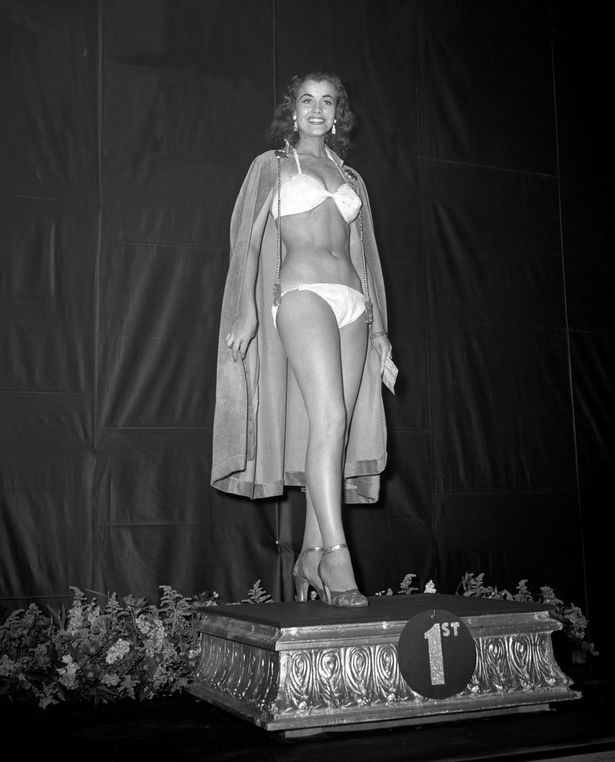
Upon winning the unsolicited invitation to the Miss World pageant, her brother Gunnar “forgot” to mention that she was to bring a white bikini with her for the contest. The first miss world match was conceived as a one-time event – Bikini Festival, related to the Festival of Britain which took place at the same time. The goal of the match was to promote a new style of swimsuit, invented from material rationing after World War II and named “the bikini” after the Bikini Atoll where the first post-war tests of the atomic bomb were taking place. The name took off because the new swimsuit was so sexy it was like a bomb was going off. Ironically, my grandmother didn’t even know what a bikini was, but since she fit exactly what Mr. Morley was looking for, she was ideal for the marketing stunt. Mr. Morley, who again, was the producer and director of the competition, described the ideal Miss World in the following way: “Girls between 17 and 25, ideally five foot seven, eight or nine stone, waist 22-24 inches, hips 35-36 inches, no more no less, a lovely face, good teeth, plenty of hair, and perfectly shaped legs from front and back – carefully checked for such defects as slightly knocked knees.”
The competition was made up of 27 girls, of whom 21 were from Britain. The voting system for the contest rated contestants 50% on figure, 20% on facial beauty, 20% on pose and 10% on acclamation of the audience. How simple not having to take into account personality or accomplishments. Makes it nice and easy for the all male judges! And the winner goes to… Kiki Hakenson, quote ““a model from Stockholm of 22 years of age, 5 feet eight inches in height and measurements 37-23-36. The brand new Miss World not only shone by her personality but also looked great in a bikini! Without a doubt, it was a very popular choice”, end quote. Surprised to win, she was handed a check of 1,000 pounds and a bouquet of Gladiolus. Holding the check and flowers, she also had to hold her poise in the itty-bitty white bikini. As expected, the bikini competition, called Miss World, attracted the attention and backlash of the public. Newspapers from across the US and London reported on the countries that closed their borders to her entry and how the Pope condemned Kiki to hell for wearing a bikini. Kiki found out about the haters years later only to respond with, “Well, I’m Swedish and Lutheran, so what do I care?”
After the competition “The charming Swedish woman” and her first three finalists toured several British cities, performing in dance halls and casinos in order to promote the contest. During her reign, Kiki traveled throughout England, Scotland, France, Italy, Germany and the Scandinavian countries where people paid to see her perform, yet none of the money was going to her. With Kiki’s new found fame and notoriety, she was in much demand by many people, organizations and corporations, all wanting her to make appearances, advertisements, endorsements, and tv commercials. She modeled for Christian Dior, Jacques Fath and Hermes in Paris and made a series of programs for Danish TV giving beauty tips. Some of Kiki’s favorite gigs to talk about were the tv ad where she pushed a lawn mower in high heels and a bikini, to make mowing your lawn look so easy, and the chimney sweep fundraiser where she played basketball having never even seen or heard of the game. And… guess how much she got paid for these endorsements. Keep in mind, she was traveling the world endorsing products, speaking, and touring as a public figure, arguably Sweden’s most famous celebrity. Any guesses what her compensation would have been back then? It was zero. Nothing. Zilch. Because she was a woman, no one thought these things were work, but rather that young women would be content with the flattery and publicity in the media. Can you imagine an Olympic athlete today not being paid by Nike? If you ask me, all of my grandmother’s work constituted a career, but without pay it was exploitation!
Kiki could have launched an acting career as well when Agostino – known as “Dino” – De Laurentiis and Carlo Ponti, Italian-American film producers invited her to a film tryout in Rome. “I was adventurous, I wanted to go” she said when recalling the opportunity. Her dad on the other hand did not want her to go, and he made it especially clear not to sign anything without his permission, but she went anyway. When she did audition, no one spoke a language she could understand. They instead showed her how to act out emotions for her try out. They offered her a 7 year contract in Hollywood, but her dad said no, he didn’t want her to be down there for 7 years, quote, “with all those wolves,” so she declined. Carlo and Dino picked their second choice, a Miss Sophia Loren whom Carlo Ponti later married.
Any guesses what her compensation would have been back then? It was zero. Nothing. Zilch. Because she was a woman, no one thought these things were work
Instead of being able to choose the life she wanted, which may have been a life on the big screen, her father decided a different life for her. When her father knew he was dying of cancer, he was concerned about Kiki and her new-found fame and how as a model she was not earning a living. He was contacted by a man named Ole Hartman (a shipping tycoon in Oslo) , who had never even met Kiki, but had heard about this gorgeous supermodel and had been sending a dozen red roses to her every day after her win in London. Ole asked Kiki’s father for her hand in marriage, and he agreed. In the ancient patriarchal tradition, Kiki’s father had maintained ownership of his daughter, keeping her safe but also determining what she could and couldn’t do. And now that he wouldn’t be around any more, he thought it was his duty to transfer ownership of his daughter to another man. Kiki’s father spoke and met often with Ole before Ole even met Kiki. Once Kiki was done with her touring around the UK and other European countries she went home to Stockholm. After some time, she and her parents were invited by Ole to a large party in Oslo, something that Kiki’s father had agreed to beforehand. That evening, in front of many, many “important” people Ole got the attention of the crowd and held up his glass for a toast to Kiki announcing that they were getting married! Kiki did not know anything about it. They were married shortly thereafter in a “stave church” on the island of Skansen in Stockholm, ironically, her favorite place to go dancing as a teenage girl. The place she had danced freely when she was young was the very same place she was married off like a piece of property.
During their marriage Ole refused to allow his wife Kiki to work for money. Kiki kept modeling, but always for free during their marriage. At first she liked all the fun and parties and drinking and dancing that came with Ole’s wealth and network. But she noticed that during that period she was not a very nice person. She talked about sleeping in till noon or even 2 or 3, because they had been out all night. After some time, Kiki grew tired of it all. She realized she wanted a family, something that Ole did not want. Eventually she learned that this marriage, which was arranged for her without her consent and basically forced on her by her father, was not going to work. She decided that she wanted to end the marriage, but when she told her husband he refused to grant her a divorce. So Kiki went to hire an attorney. The lawyer said he wouldn’t work for her. She tried another, with the same result. Finally Kiki learned that her husband Ole had bought off every solicitor she tried to hire to get legal help securing a divorce. Finally, she found a female attorney who stayed loyal to her and accomplished getting the divorce through and freeing Kiki from this unhealthy relationship. Since her top priority was to get out of the marriage, she had to leave with nothing and ended up without a penny.
She then decided to go back to school, and studied Haute Couture in Europe for college. In order to make money she negotiated her contracts and eventually started getting paid for her modeling. The first time she was actually offered a good amount of money, it was to do an interview with a famous celebrity in Denmark. The day included filming her on a rollercoaster ride. She hated roller coasters, but she did it anyway because it was her job. After a long day she had completed her side of the deal, but the company had not, and without a signed contract she never got paid. I can only imagine the frustration of this experience and many more like it. She realized she was going to have to be more strategic and assertive, talking about money upfront and with a contract involved. The first payment she ever received was not money at all, but a pair of red shoes from the modeling shoot itself. The shoes weren’t even her size. She had the best fashion designers making her clothes, but free clothes and product discounts are a poor excuse for a salary.
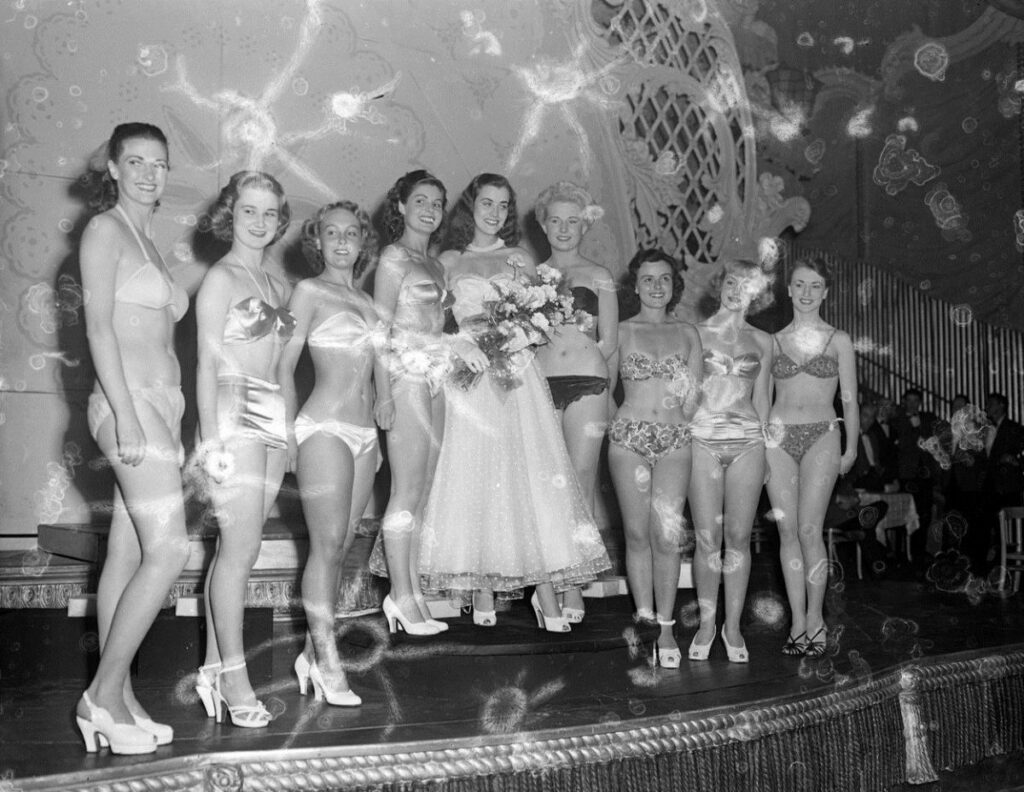
Kiki the Global Ambassador had no female mentors to pave the way for a modeling career so with her inner Viking Shield Maiden, she picked up her sword and began her fight for herself and other young women’s right to be paid. Women have obviously been working hard all throughout history, so it wasn’t a matter of women needing to work harder; it was a matter of being stuck in an oppressive system, and this is what Kiki was working to change. Kiki, arguably the first Supermodel, paved the way for Twiggy and her huge success in 1964.
Years later she met a man named Dallas Anderson during a dinner in Lillehammer, Norway, where she was working at a photoshoot. Dallas was a Norwegian American from Wisconsin who was studying sculpture in Oslo and was on vacation skiing at the Lillehammer resort. They fell in love and married in 1962 three years after my father, Orell’s birth in Copenhagen, Denmark. She had managed to make money doing modeling, and supported the family from 1959 to 1967 while my grandfather finished his terminal degree in art at the Royal Danish Academy, and ultimately found work as an artist. At this point she was at the head of top fashion in Europe. But when Dallas’s career opened up to a professorship of sculpture at Brigham Young University, they followed his career and not hers. Dallas was also offered the position of Royal Sculptor of Denmark which would have allowed Kiki to stay and continue her modeling career. But he decided to go work in Utah instead. In Utah years later she started working again in a copy and print shop. Over the next 25 years they lived in Pleasant Grove, Utah, Bolsa Chica, California and finally Neenah, Wisconsin, her husband’s hometown; it was a desolate place far from her homeland.
As a mother of three, she made her children feel loved, safe, understood and encouraged to follow their dreams. Her warm and playful personality drew people to her, and her home was filled with stories, games and laughter. Her son – my uncle – described one story, saying, “when I was 11 years old she traveled to London to be a judge for the Miss World pageant and I saw her on international TV. I realized that she wasn’t just a mom but a woman who had touched many lives and was appreciated by people around the world.” Her efforts expanded women’s freedom to enjoy all the fulfilling aspects of life by giving women the choice to make a living off the type of work that she pursued.
The first payment she ever received was not money at all, but a pair of red shoes from the modeling shoot itself. The shoes weren’t even her size.
Despite many big life choices being decided for her by men, Kiki made the most out of her circumstances and is incredibly proud of what she has done for women’s rights. Since 1972, Miss World has continued this legacy of change for good. The founder of the Miss World Pageant, Eric Morely, started the competition to sell bikinis, but his wife Julia Morely changed the focus of the organization to “Beauty with a Purpose” which requires the contestants to participate in humanitarian projects, and raises and donates millions of English pounds to underprivileged children around the world. One of the most prestigious awards given out by Miss World is the “Beauty with a Purpose” award, which is granted to the top charitable projects.
So back to my 3rd grade dream of attending the Miss World pageant. A few weeks ago my family and I were flown out to Puerto Rico for the 70th Miss World competition. We were asked to come and accept an award on behalf of Kerstin Margareta “Kiki” Håkansson since she is 92 years old and couldn’t make the journey herself. Initially, I was just thrilled to get to be on live tv; my childhood dream was finally going to be fulfilled. Then, I explored my feelings a little more deeply about the ensuing event and discovered some cognitive dissonance with my feminist values. Afterall, the 1968 protest against the Miss America pageant in the US was an iconic symbol of second-wave feminism. It was obvious these protesters had a point, that something about beauty pageants at their core smelled rotten, but I hadn’t yet wrapped my head around the why.
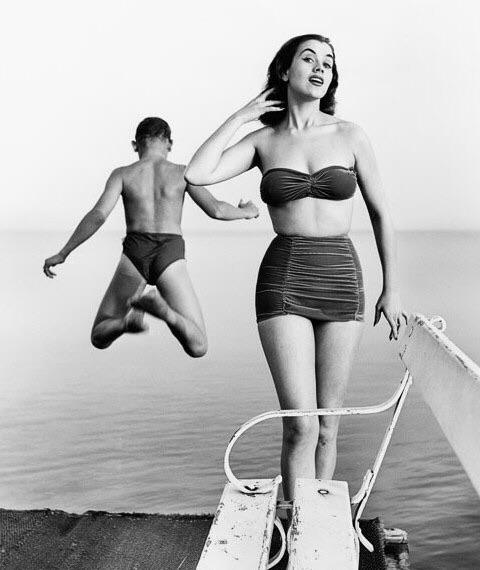
So, I processed what I have learned about the fundamental roots that the beauty industry has in objectifying women’s bodies and so it makes sense that beauty pageants only go further to serve that notion. I mean, how can I claim that Kiki’s face and body wasn’t being used to sell bikinis in the bikini festival of the Miss World competition and then in the following endorsements that rushed to use her title as the prettiest woman in the world to sell their products, yet they didn’t feel the need to pay the very human being behind the beauty. This led me to think of the patriarchal history of men owning women’s bodies. Why would they have to pay Kiki if the men in charge of these companies already owned the capital of her body, by default of them being male and her being female?
So, I clearly felt that the origins of beauty pageants were not something I could support. But I also felt the fire of hope inside me that wanted so badly for there to be genuine good that could still come out of these beauty pageants. And having the very example of my grandmother’s incredible life as the focus of the trip, my hope grew. If the playing field was set up to exploit the resource of her body, for her to turn around and use the playing field to pursue a fulfilling and empowering life is ironic if not beautiful. And for that to be the story of the first Miss World’s life, I can’t help but think of the many Miss Worlds after her and the expanded opportunities they had. I mean think of the skills that these women gain through the Miss World track: public speaking skills and poise under pressure (like being asked tons of questions in front of an audience), soliciting finances (like campaigning for funds to cover the costs of the competition and travel), developing an issue platform, fostering self-confidence (which is something that is necessary to take on prestigious careers, but can be lacking in many girls’ childhoods due to how girls are raised), and representing constituents (because contestants are seen as representing a country). It’s no wonder that with these skills, there have been over 50 beauty queens turned politicians, and many more contestants have pursued fulfilling careers in accordance with these strengths.
So when I went to Puerto Rico for this year’s Miss World competition and got to hang out in the midst of these power house women at the resort, on the buses, at the charity gala, and at the dress rehearsal, I really couldn’t feel anything but respect for these women. For example, I met a Beauty with a Purpose winner, Miss America Shree Sainil, on the bus going to the charity dinner. The amazing story she shared as a burn victim survivor was so inspiring to me. I also met Ms. Julia Morely, president of the Miss World organization as well as her son and chair, Steve Douglas, both of whom are brilliant and so embrace the feelings I now have about this elegant and empowering international beauty pageant. As I met Shree and the Morleys and the rest of the contestants, I could only feel their kindness in befriending me, their strength in leading the impactful humanitarian projects and organizations started in their countries for “Beauty with a Purpose”, their goddess wings in embracing the divine of female sexuality, and their resilience in working so hard all the way up to the final show, only to be told on the night of the dress rehearsal that it was canceled and then postponed to mid-March due to Covid. Being in the middle of all of these powerful women, I couldn’t help but love them because of the love that emanated so gracefully from their own hearts.
So, while all I wanted out of this experience at first was to be on tv, I gained so so much more, so even if my family is unable to go back for the finale in March, I have already felt my grandma’s Miss World Goddess power and the succeeding lineage of all the Miss Worlds flowing through to us, the descendants of the very first Miss World.
she wasn’t just a mom
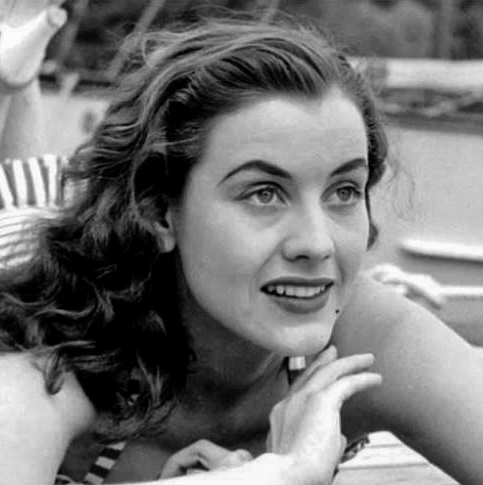
but a woman who had touched many lives
Listen to the Episode
&
Share your Comments with us below!

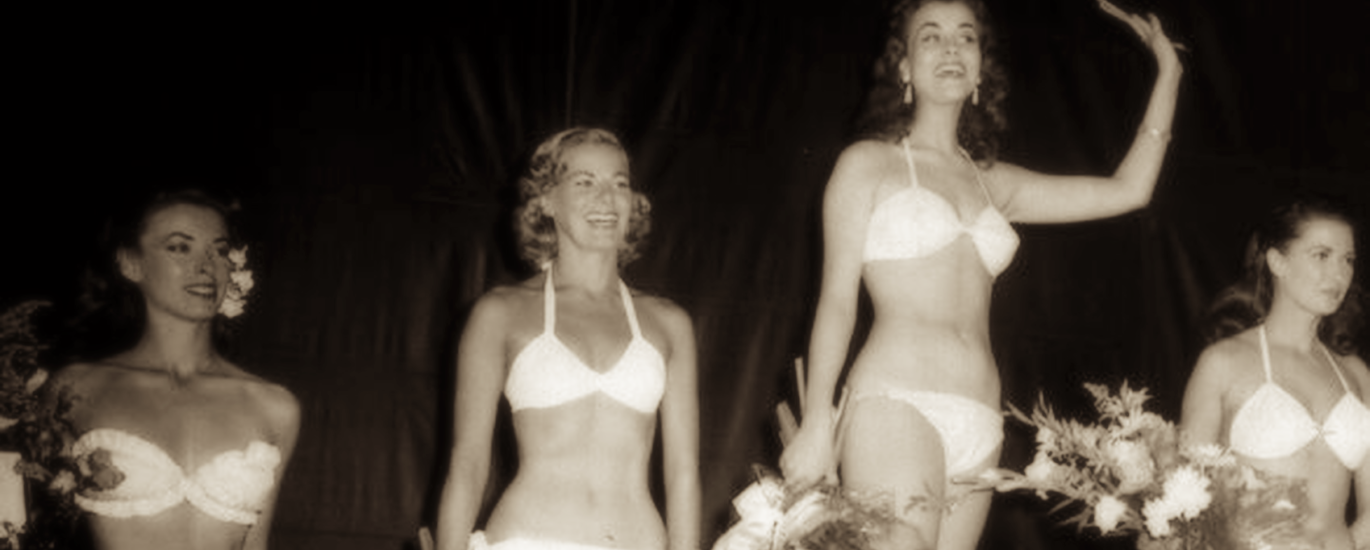
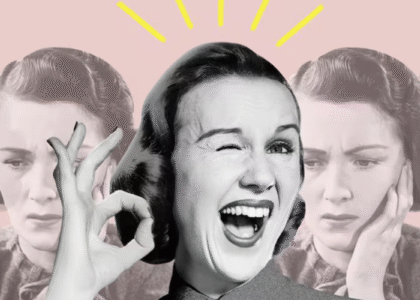

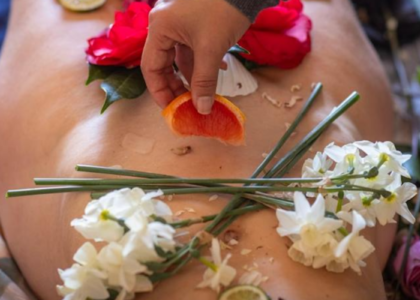
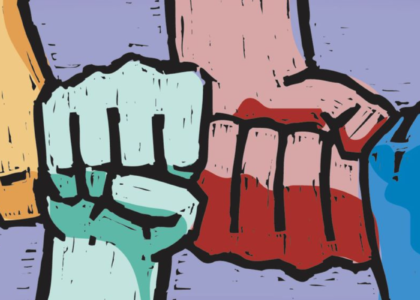
Absolutely wonderful – thank you.
I needed to thank you for this excellent read!! I definitely loved every little bit of it. Ive got you saved as a favorite to look at new stuff you postÖ